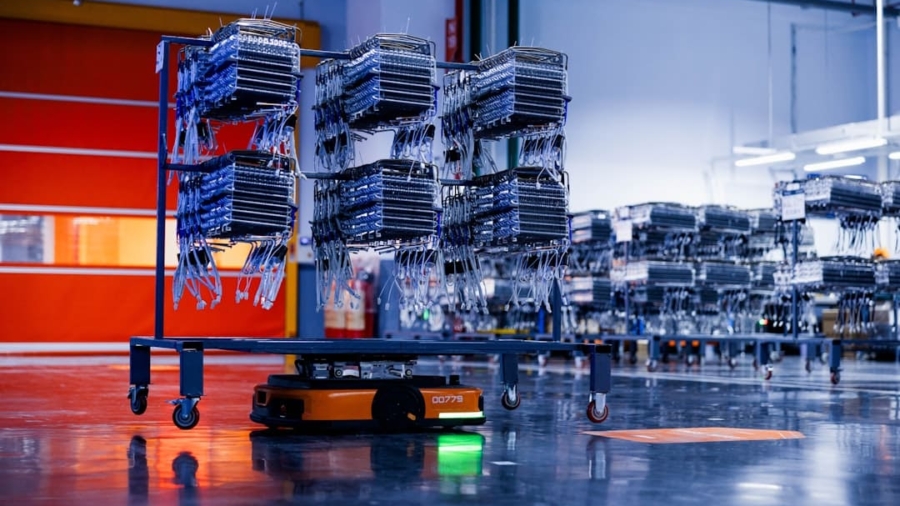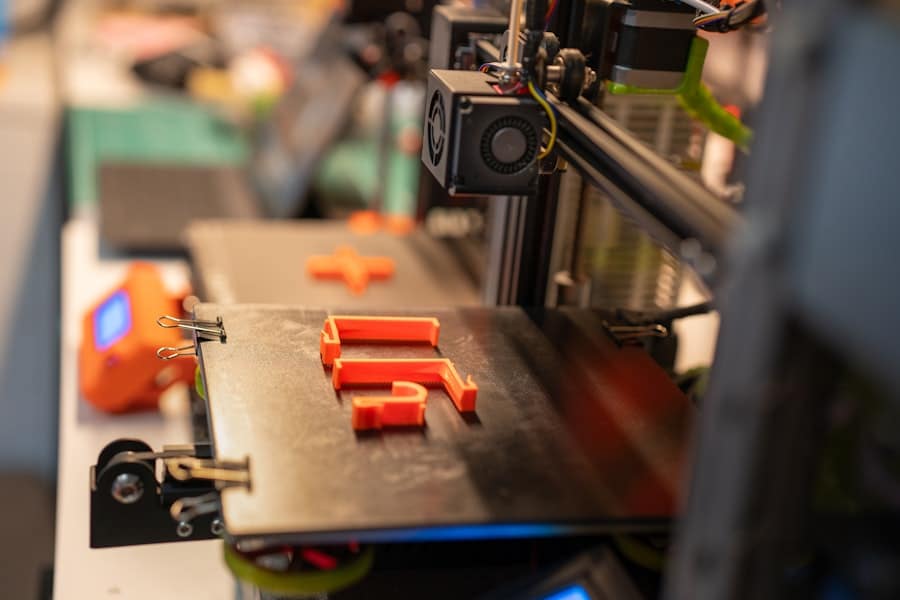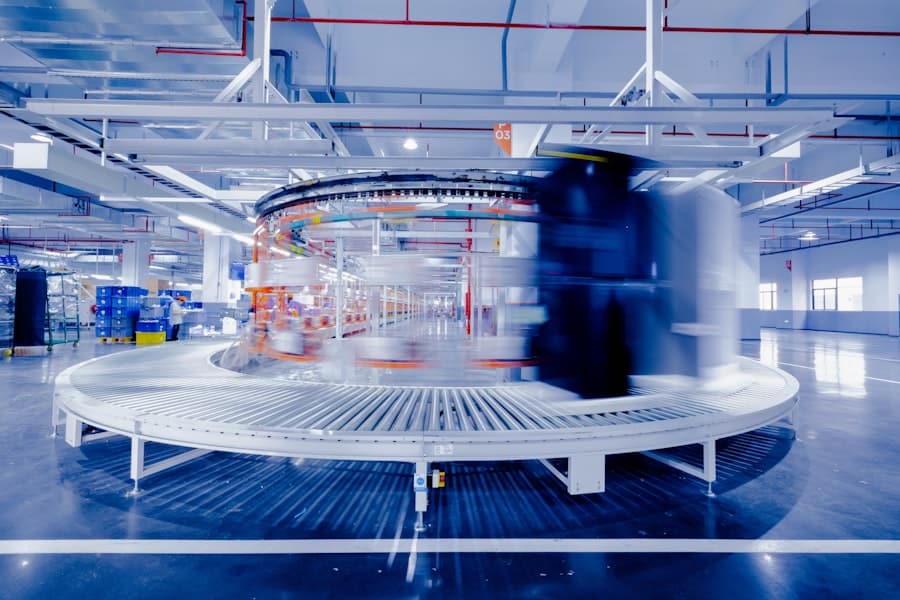The advent of fully automated factories represents a significant leap in manufacturing technology, characterized by the integration of robotics and advanced automation systems. These factories utilize a combination of robotic arms, conveyor systems, and sophisticated software to streamline production processes, reduce human intervention, and enhance efficiency. The concept of automation in manufacturing is not new; however, the current wave of fully automated factories is driven by rapid advancements in robotics, artificial intelligence (AI), and the Internet of Things (IoT).
This convergence of technologies has enabled manufacturers to create environments where machines can operate independently, making real-time decisions based on data analytics and machine learning algorithms. Fully automated factories are designed to optimize production lines, minimize waste, and improve product quality. They can operate around the clock without the need for breaks or downtime typically associated with human labor.
This level of efficiency is particularly appealing in industries where precision and speed are paramount, such as automotive manufacturing, electronics assembly, and pharmaceuticals. As companies strive to remain competitive in a global market, the shift towards fully automated factories is becoming increasingly prevalent, marking a transformative era in industrial production.
Key Takeaways
- Fully automated factories with robotics are revolutionizing the manufacturing industry by utilizing advanced technology to streamline production processes.
- The advantages of fully automated factories include increased efficiency, reduced labor costs, improved product quality, and enhanced safety for workers.
- Challenges and limitations of fully automated factories include high initial investment, potential job displacement, and the need for skilled technicians to maintain and operate the technology.
- The integration of artificial intelligence and machine learning in fully automated factories enables predictive maintenance, autonomous decision-making, and continuous process optimization.
- Environmental and sustainability considerations in fully automated factories focus on energy efficiency, waste reduction, and the use of eco-friendly materials to minimize the environmental impact of manufacturing processes.
Advantages and Benefits of Fully Automated Factories
The advantages of fully automated factories are manifold, with efficiency being one of the most significant benefits. Automation allows for continuous production cycles that can significantly increase output while maintaining consistent quality. For instance, automotive manufacturers like Tesla have implemented highly automated assembly lines that can produce vehicles at an unprecedented rate.
By utilizing robotics for tasks such as welding, painting, and assembly, these factories can achieve higher throughput compared to traditional manufacturing setups.
While the initial investment in robotics and automation technology can be substantial, the long-term savings often outweigh these costs.
Automated systems reduce labor costs by minimizing the need for human workers in repetitive tasks. Additionally, they decrease the likelihood of errors that can lead to costly rework or product recalls. For example, companies like Amazon have integrated robotics into their warehouses to streamline order fulfillment processes, resulting in faster delivery times and reduced operational costs.
Moreover, fully automated factories enhance workplace safety by reducing the risk of accidents associated with manual labor. Robots can perform hazardous tasks that would otherwise pose risks to human workers, such as handling heavy materials or working in extreme conditions. This shift not only protects employees but also fosters a more productive work environment where human workers can focus on higher-level tasks that require critical thinking and creativity.
Challenges and Limitations of Fully Automated Factories
Despite the numerous advantages, fully automated factories face several challenges and limitations that must be addressed for successful implementation. One of the primary concerns is the high initial capital investment required to set up an automated facility. The cost of purchasing advanced robotics, integrating software systems, and retrofitting existing infrastructure can be prohibitive for many companies, particularly small and medium-sized enterprises (SMEs).
This financial barrier can limit access to automation technologies and create disparities between large corporations and smaller businesses. Another significant challenge is the complexity of integrating various technologies within a fully automated factory. The seamless operation of robotics, AI systems, and IoT devices requires sophisticated programming and ongoing maintenance.
Companies must invest in skilled personnel who can manage these systems effectively. The rapid pace of technological advancement also means that businesses must continually update their systems to remain competitive, which can lead to additional costs and resource allocation challenges. Furthermore, there are concerns regarding the reliability and flexibility of fully automated systems.
While robots excel at repetitive tasks, they may struggle with unexpected changes in production requirements or variations in product design. For instance, if a factory needs to switch from producing one model to another, reprogramming robots can be time-consuming and may lead to temporary downtime. This inflexibility can hinder a company’s ability to respond quickly to market demands or changes in consumer preferences.
Impact on the Labor Force and Job Market
The rise of fully automated factories has profound implications for the labor force and job market. One of the most immediate effects is the displacement of workers who perform tasks that can be automated. As robots take over repetitive and manual jobs, there is a growing concern about job loss in sectors such as manufacturing and warehousing.
For example, a report from McKinsey Global Institute estimates that by 2030, up to 800 million jobs worldwide could be displaced by automation technologies. However, it is essential to recognize that while some jobs may be lost due to automation, new opportunities are also created in different areas. The demand for skilled workers who can design, program, and maintain automated systems is on the rise.
As factories become more technologically advanced, there will be an increasing need for professionals with expertise in robotics, AI, data analysis, and system integration. This shift necessitates a reevaluation of workforce training programs to equip workers with the skills needed for emerging roles in an automated economy. Moreover, the nature of work itself is evolving as automation takes hold.
Many companies are beginning to focus on reskilling their employees rather than laying them off. For instance, Siemens has implemented training programs aimed at upskilling its workforce to adapt to new technologies within its factories. By investing in employee development, companies can retain valuable talent while ensuring that their workforce remains relevant in an increasingly automated landscape.
Integration of Artificial Intelligence and Machine Learning in Fully Automated Factories
The integration of artificial intelligence (AI) and machine learning (ML) into fully automated factories is revolutionizing manufacturing processes by enabling smarter decision-making and enhanced operational efficiency. AI algorithms can analyze vast amounts of data generated by machines in real-time, allowing for predictive maintenance and optimization of production schedules. For example, General Electric employs AI-driven analytics in its manufacturing facilities to predict equipment failures before they occur, reducing downtime and maintenance costs.
Machine learning further enhances automation by enabling systems to learn from historical data and improve their performance over time. In a fully automated factory setting, ML algorithms can identify patterns in production data that humans might overlook, leading to more informed decisions regarding resource allocation and process improvements. Companies like Bosch are leveraging machine learning to optimize their supply chain operations by predicting demand fluctuations and adjusting production levels accordingly.
Additionally, AI-powered robots are becoming increasingly capable of performing complex tasks that require adaptability and precision. Collaborative robots (cobots) are designed to work alongside human operators, enhancing productivity while ensuring safety. These robots can learn from human interactions and adjust their actions based on real-time feedback.
For instance, Universal Robots has developed cobots that can be easily programmed by operators without extensive technical knowledge, making automation accessible to a broader range of industries.
Environmental and Sustainability Considerations
As industries move towards fully automated factories, environmental sustainability has become a critical consideration in the design and operation of these facilities. Automation technologies can contribute significantly to reducing waste and energy consumption in manufacturing processes. For example, advanced robotics can optimize material usage by minimizing scrap during production runs.
This not only lowers costs but also reduces the environmental impact associated with excess waste. Moreover, fully automated factories can implement energy-efficient practices through smart technologies that monitor energy consumption in real-time. By utilizing IoT sensors and AI analytics, manufacturers can identify areas where energy is being wasted and make adjustments accordingly.
Companies like Schneider Electric are at the forefront of developing smart factory solutions that prioritize energy efficiency while maintaining high levels of productivity. Sustainability extends beyond energy consumption; it also encompasses responsible sourcing of materials and ethical production practices. Fully automated factories have the potential to enhance transparency in supply chains by utilizing blockchain technology to track materials from origin to final product.
This level of traceability ensures that manufacturers adhere to sustainable practices while providing consumers with information about the environmental impact of their purchases.
Future Trends and Innovations in Fully Automated Factories
The future of fully automated factories is poised for remarkable innovations driven by advancements in technology and changing market demands. One notable trend is the increasing adoption of digital twins—virtual replicas of physical systems that allow manufacturers to simulate processes before implementation. By creating digital twins of production lines, companies can test various scenarios and optimize workflows without disrupting actual operations.
As additive manufacturing becomes more sophisticated, companies may shift towards localized production models where products are manufactured closer to their end-users. This approach not only reduces transportation costs but also allows for greater customization based on consumer preferences.
Furthermore, advancements in collaborative robotics will continue to shape the landscape of fully automated factories. As robots become more adept at working alongside humans, we can expect an increase in hybrid work environments where human creativity complements robotic efficiency. This collaboration will enable manufacturers to tackle complex challenges while maintaining high levels of productivity.
Finally, as sustainability becomes a central focus for consumers and regulators alike, we will likely see innovations aimed at reducing carbon footprints within fully automated factories. From renewable energy sources powering operations to closed-loop systems that recycle materials efficiently, the future will demand a holistic approach to manufacturing that prioritizes environmental stewardship alongside technological advancement.
The Potential of Fully Automated Factories with Robotics
The potential of fully automated factories with robotics is vast and multifaceted, offering opportunities for increased efficiency, cost savings, and enhanced product quality across various industries. While challenges such as high initial investments and workforce displacement must be navigated carefully, the integration of AI and machine learning presents exciting possibilities for smarter manufacturing processes. As companies embrace automation technologies while prioritizing sustainability and workforce development, they position themselves at the forefront of a transformative era in industrial production.
The journey towards fully automated factories is not merely about replacing human labor with machines; it is about reimagining how we approach manufacturing in an increasingly complex world. By leveraging advanced technologies responsibly and ethically, businesses can create environments that foster innovation while addressing pressing global challenges such as climate change and resource scarcity. As we look ahead, it is clear that fully automated factories will play a pivotal role in shaping the future of manufacturing—one where efficiency meets sustainability in harmony with human ingenuity.
If you are interested in the latest technological advancements in the manufacturing industry, you may also want to check out Exploring the Features of the Samsung Notebook 9 Pro. This article delves into the innovative features of the Samsung Notebook 9 Pro, highlighting how technology is shaping the way we work and interact with machines. Just like the future of fully automated factories with robotics, this article showcases how cutting-edge technology is revolutionizing various aspects of our lives.
FAQs
What are fully automated factories with robotics?
Fully automated factories with robotics are manufacturing facilities that utilize advanced robotics and automation technology to perform tasks traditionally carried out by human workers. These factories are designed to operate with minimal human intervention, maximizing efficiency and productivity.
What are the benefits of fully automated factories with robotics?
Fully automated factories with robotics offer several benefits, including increased production efficiency, improved product quality, reduced labor costs, and enhanced workplace safety. These facilities can also operate 24/7 without the need for breaks or shifts, leading to higher output and faster turnaround times.
What types of tasks can be performed by robots in fully automated factories?
Robots in fully automated factories can perform a wide range of tasks, including assembly, welding, painting, packaging, material handling, and quality control. These robots are equipped with advanced sensors and programming to carry out these tasks with precision and accuracy.
What is the future outlook for fully automated factories with robotics?
The future of fully automated factories with robotics is expected to continue to grow as technology advances. This includes the development of more sophisticated robots with artificial intelligence and machine learning capabilities, as well as the integration of robotics with other emerging technologies such as 3D printing and the Internet of Things (IoT).
What are the potential challenges of implementing fully automated factories with robotics?
Challenges in implementing fully automated factories with robotics include the initial investment costs, the need for specialized technical expertise to program and maintain the robots, and potential job displacement for human workers. Additionally, ensuring the cybersecurity of automated systems and addressing ethical considerations surrounding the use of robotics in the workplace are also important challenges to consider.



